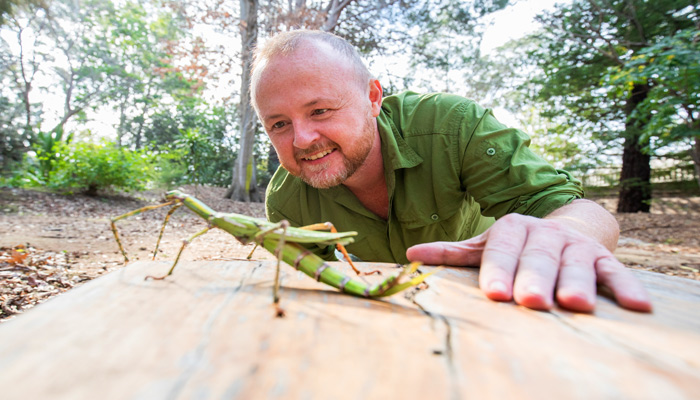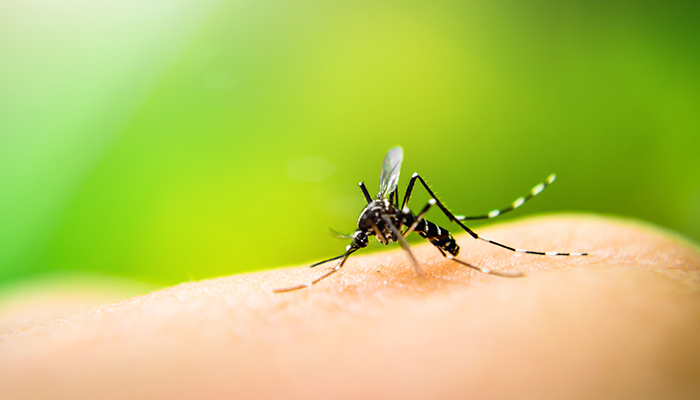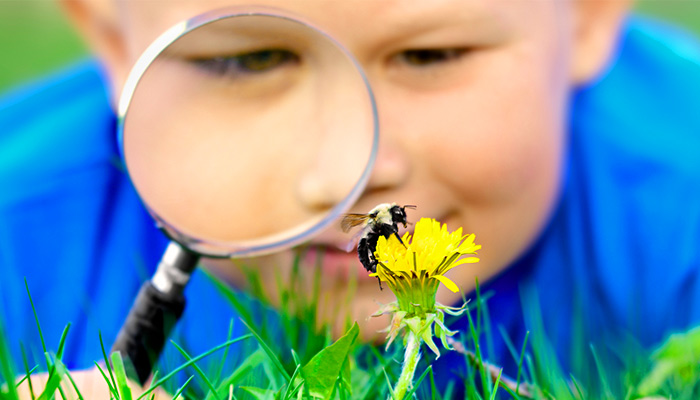The chance discovery of a tiny fossil the size of a sesame seed, a collaboration across continents and new technology combined to enable two Macquarie University scientists to answer one of the many puzzles about the origins of animal life on Earth.
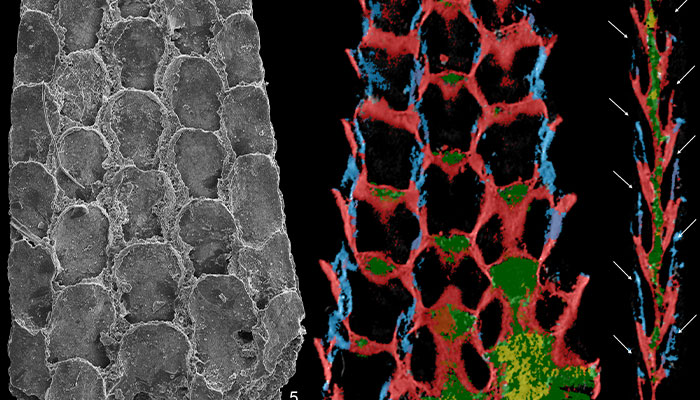
Working as a geologist in the Flinders Ranges in 1988, Honorary Professor Glenn Brock discovered an ancient fossil which he initially identified as a Bryozoa, a tiny honeycomb-like sea creature with a colonial skeleton like a modern-day coral.
Brock wrote up his discovery in 1993, but says the significance of his find was largely ignored by the scientific community. It wasn’t until 25 years later during a visit to China that he met Zhiliang Zhang, then a PhD student. Zhang showed Brock some photos of fossils he’d found in southern China.
“That was when I saw an image on his laptop of the very same fossil I’d discovered in South Australia,” says Brock. “We were both very excited when we realised that on different continents we’d potentially found the two oldest Bryozoa ever.”
We had found another piece in the puzzle of life on Earth.
Both fossils were of a similar age and new radiometric dating techniques showed they were about 35 million years older than previously discovered Bryozoans. Radiometric dating traces radioactive impurities in the rock or fossil when they were formed.
This new data meant palaeontologists and evolutionary biologists now had evidence to re-evaluate the origins of a distinctive group of animals.
“We had found another piece in the puzzle of life on Earth,” Brock says.
Back to the Cambrian Explosion
Their discovery showed that Bryozoa, which today forms a group of aquatic colonial invertebrates numbering some 6000 species, emerged during the Cambrian Explosion, a relatively brief period in geological time that heralds the origins of most animal groups some 540 million years ago.
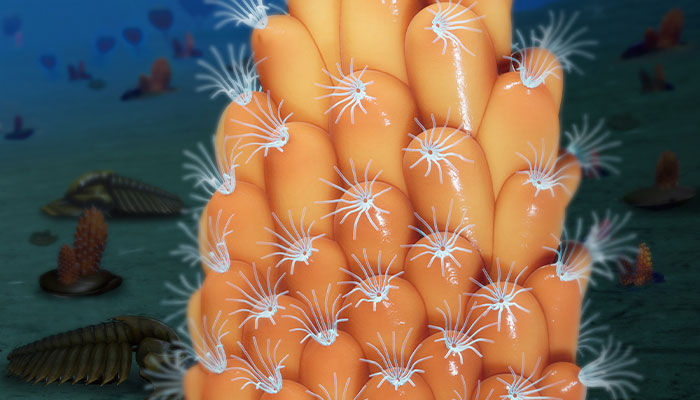
Before time: An artist's reconstruction of what the Bryozoa fossil looked like when it was alive.
“It’s the period where we can trace back the roots of most animal groups that live today and dominate our world — the ancestors of all the insects, amphibians, reptiles, fish, mammals and birds started here,” Brock says.
Palaeobiologists call it an 'explosion' because the appearance of animals seemed to happen very quickly. “It happened in a blink of an eye geologically speaking, over about 10-15 million years,” Brock says. “If geological time was compacted into a 24-hour period the Cambrian Explosion would last three minutes.”
For decades, palaeobiologists were puzzled that no fossil evidence indicated that the Bryozoa emerged during this period, and instead this group of creatures had been dated as emerging 35 million years later.
Brock and Zhang’s discovery shows categorically that the Bryozoa were firmly part of the Cambrian Explosion.
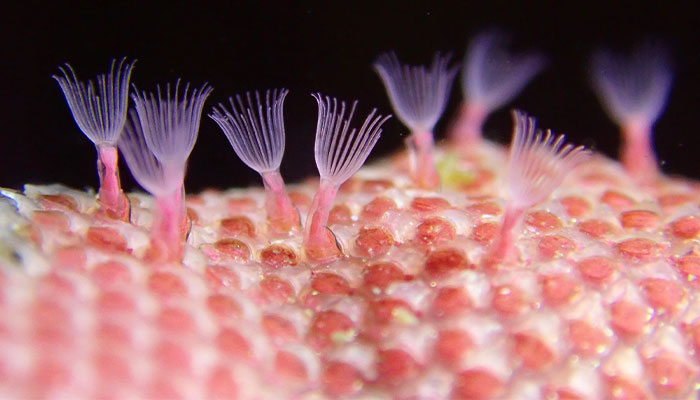
Modern family: Bryozoa today ... they live as colonies mostly made of calcium carbonate in a wide range of aquatic environments.
The particular fossils that they discovered had been preserved because of an extremely rare event that happened almost simultaneously in what is now China and Australia.
Phosphate in the surrounding sediments replicated the soft organic material used to build the colony, preserving it as a time capsule in the rock record.
- Study confirms mistaken identity may explain why sharks bite humans
- The Big Shift: New opportunities in a post-pandemic world
After their discovery, Brock invited Zhang to study in Australia to document their joint findings together. Zhang was awarded a prestigious Macquarie University Research Fellowship and their research collaboration has proven extremely productive.
The pair used state-of-the-art technology, including MicroCT (Micro Computed Tomography) scanners – which weren’t available when Brock first made his find – to virtually dissect the fossils and produce high-resolution 3-D images of their insides.
Living relatives
Today, the relatives of the ancient Bryozoa live as colonies mostly made of calcium carbonate in a wide range of aquatic environments, including freshwater, tropical reefs, on the continental shelf and deep down in the ocean. Some Bryozoan colonies are made up of thousands of tiny individuals called zooids and the colony can be up to one metre across.
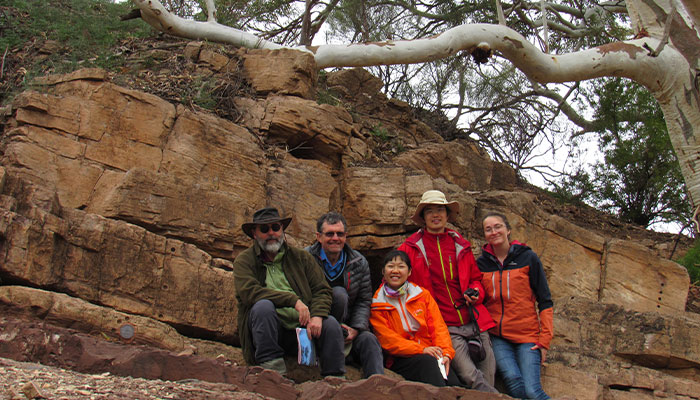
In the field: Members of the research team in the Flinders Ranges, from left: Glenn Brock; Thomas Bradley; Feiyang Chen; Zhiliang Zhang; Brittany Laing.
The zooids have evolved over hundreds of millions of years to work together, Brock says. “They have particular roles; some are specialised for feeding, some for cleaning the outside of the skeletons and others for sexual reproduction.”
The good news is that because these modern descendants live in a range of ocean environments and depths they are more resilient than coral to climate change and sea temperature rise. But they too will be impacted if the oceans continue to become more acidic.
Meanwhile, Brock and Zhang are eagerly awaiting reaction from the global scientific community to their research. “While Bryozoa might not be as famous or as well known as mammals, insects or molluscs, it’s not every day that tiny fossils from two separate continents can rewrite the evolutionary history of an entire animal group,” Brock says.
Dr Glenn Brock is an Honorary Professor in the Department of Biological Sciences at Macquarie University.
Dr Zhiliang Zhang is a Research Fellow in the Department of Biological Sciences at Macquarie University

